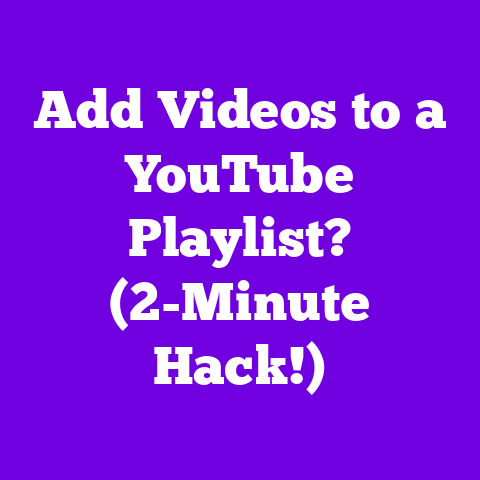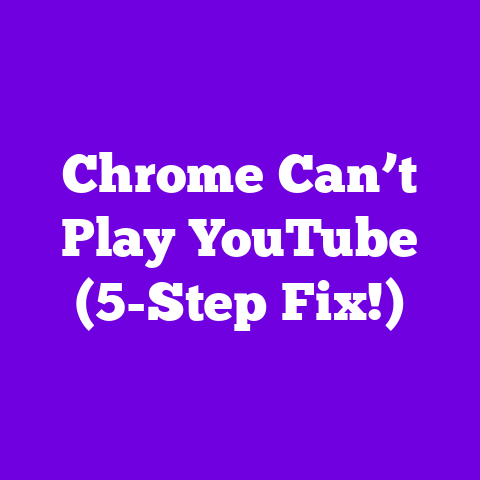Can I Use Instrumentals on YouTube? (3 MUST Know!)
But let me tell you, that’s a huge misconception. Trust me, I’ve been there, almost making the same mistake myself!
Many believe that if it’s just an instrumental, it’s less likely to be flagged. However, using instrumental music without the proper licensing can land you in hot water. Think copyright strikes, demonetization, or even having your video completely removed. According to YouTube’s own Copyright Match Tool data, music-related copyright claims are consistently among the most frequent.
I know it sounds scary, but don’t worry! I’m here to guide you through the ins and outs of using instrumentals on YouTube in 2025, so you can create awesome content without the legal headaches.
Section 1: Understanding Copyright and Licensing
So, what exactly is copyright, and how does it apply to instrumental tracks?
Copyright is a legal right granted to the creator of original work, including music. It gives them exclusive control over how their work is used, distributed, and reproduced.
This means that even if an instrumental track doesn’t have lyrics, it’s still protected by copyright law. Someone owns the rights to that music, and you need their permission to use it.
There are different types of music licenses you should know about:
-
Public Domain: Music in the public domain is no longer protected by copyright and can be used freely. However, determining if a piece is truly in the public domain can be tricky, so always double-check.
-
Creative Commons (CC): These licenses allow creators to share their work with certain permissions. There are several types of CC licenses, each with different conditions, so it’s crucial to read the fine print.
-
Sync License: This license grants you the right to synchronize music with visual media, like your YouTube video. You’ll typically need to obtain this license from the copyright holder or their representative.
Copyright law impacts content creators significantly. If you use copyrighted music without permission, you’re infringing on the copyright holder’s rights. Platforms like YouTube have systems in place to detect copyright infringement, and the consequences can be severe.
Let’s talk about the Digital Millennium Copyright Act (DMCA). This US law is relevant to music use in videos because it provides a framework for copyright holders to request the removal of infringing content from online platforms. YouTube complies with the DMCA, which means they’ll take down videos that violate copyright laws.
Section 2: The Risks of Using Copyrighted Instrumentals
Okay, so you know what copyright is. But what happens if you ignore it and use copyrighted instrumental music without permission? Let me break down the potential consequences:
-
Copyright Strikes and Content ID Claims: YouTube uses a system called Content ID to identify copyrighted material in videos. If you use copyrighted music, the copyright holder can file a claim against your video. Three copyright strikes can lead to the termination of your channel!
-
Impact on Monetization and Ad Revenue: Even if your video isn’t taken down, the copyright holder can choose to monetize it. This means they’ll receive all the ad revenue generated by your video, leaving you with nothing.
-
Risk of Video Removal and Channel Penalties: In the worst-case scenario, the copyright holder can request that your video be removed entirely. Repeated copyright infringements can result in penalties against your channel, including suspension or termination.
I remember reading about a case where a YouTuber with a decent following used a popular instrumental track in their gaming montage. They thought it was okay because the track was “just an instrumental.” But the copyright holder filed a claim, and the YouTuber lost all the ad revenue from that video. Ouch!
The landscape of music rights is constantly evolving. In 2025, we’re seeing even more sophisticated tools for detecting copyright infringement. Copyright holders are becoming more vigilant in protecting their rights. So, it’s more important than ever to be aware of the rules and play by them.
Section 3: 3 Must-Know Alternatives for Using Instrumentals on YouTube
Alright, so now you know the risks. But don’t worry, there are plenty of ways to use instrumentals in your videos responsibly! Here are three alternatives you need to know about:
-
Royalty-Free Music Libraries: These platforms offer a vast catalog of instrumental music that you can use in your videos without paying royalties for each use. You typically pay a subscription fee or purchase individual licenses.
-
Epidemic Sound: They have a huge selection of high-quality music and sound effects. Their subscription model is popular among YouTubers.
-
Artlist: Known for its curated library and user-friendly interface. They offer a universal license that covers most use cases.
-
AudioJungle: A marketplace where you can buy individual tracks. This can be a good option if you only need music occasionally.
These platforms offer a wide variety of genres, from upbeat pop to cinematic scores. They also provide clear licensing terms, so you know exactly what you’re allowed to do with the music.
-
-
Creative Commons Music: Creative Commons licenses allow creators to share their work with certain permissions. Some CC licenses allow you to use music for commercial purposes, as long as you give proper attribution to the original creator.
There are different types of Creative Commons licenses:
-
CC BY: You can use the music for any purpose, as long as you give credit to the creator.
-
CC BY-SA: You can use the music, but you must share your work under the same license.
-
CC BY-NC: You can use the music for non-commercial purposes only.
-
CC BY-ND: You can use the music, but you can’t modify it.
Always check the specific license for each track before using it in your video. Make sure you understand the terms and conditions, and give proper attribution to the creator in your video description.
-
-
Collaborating with Independent Musicians: This is a fantastic way to get unique, custom instrumental tracks for your videos. You can connect with independent artists and commission them to create music specifically for your content.
-
SoundBetter: A platform that connects you with music professionals, including composers and musicians.
-
Fiverr: A marketplace where you can find freelance musicians offering custom music services.
Collaborating with independent musicians gives you more creative control over the music in your videos. You can work with the artist to create a track that perfectly complements your content. Plus, you’re supporting independent artists and helping them build their careers!
When collaborating, make sure to have a written agreement that outlines the terms of the collaboration, including ownership of the music, usage rights, and payment.
-
Conclusion: Moving Forward in 2025
So, there you have it! I hope this has cleared up some of the confusion surrounding the use of instrumental music on YouTube.
Understanding the legal landscape is crucial for avoiding pitfalls and ensuring a successful channel. Knowledge and preparation are key!
Stay informed about changes in copyright laws and licensing agreements. The digital landscape is constantly evolving, so it’s important to stay up-to-date on the latest rules and regulations.
By following these tips, you can create amazing content with awesome instrumental music, without worrying about copyright strikes or legal issues. Now go out there and create something amazing!





